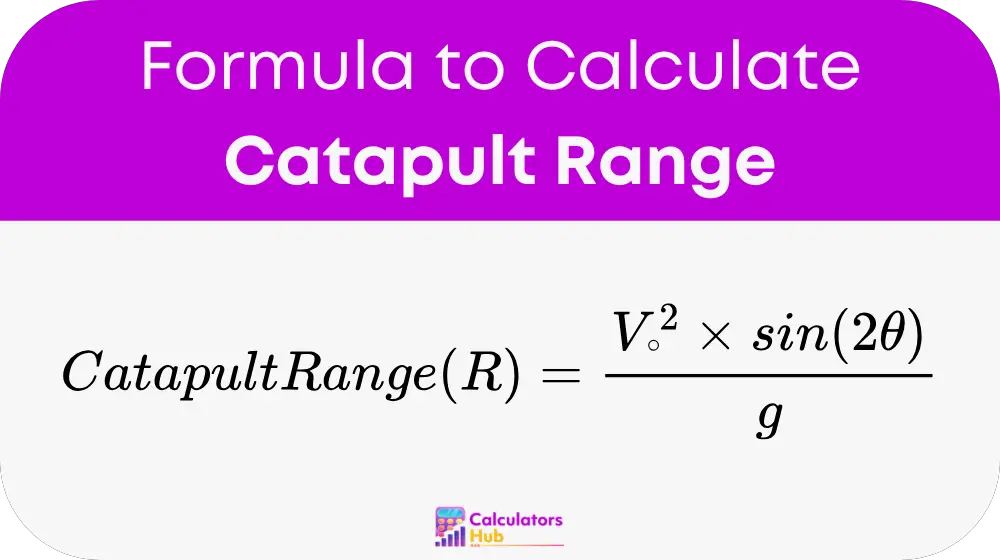The Catapult Range Calculator is a specialized tool designed to estimate the distance a projectile will travel when launched from a catapult. Understanding the range of a projectile is crucial in various fields, including physics, engineering, and recreational activities like sports and games. The calculator helps users quickly determine the optimal launch parameters needed to achieve desired distances, making it a valuable resource for students, educators, and enthusiasts of projectile motion.
By inputting key variables such as the initial launch velocity and launch angle, users can gain insights into how these factors affect the range of the projectile. This understanding is not only academically enriching but also practical for applications such as designing effective catapults or launching objects in competitions.
Formula of Catapult Range Calculator
The formula for calculating the range of a catapult is as follows:

where:
- Catapult Range (R) = The horizontal distance traveled by the projectile (in meters)
- V₀ = Initial launch velocity of the projectile (in meters per second)
- θ = Launch angle of the projectile relative to the horizontal (in degrees)
- g = Acceleration due to gravity (typically 9.81 m/s² on Earth)
This formula takes into account the essential components of projectile motion, enabling accurate calculations of the distance traveled based on the given parameters.
General Terms Table
The following table defines general terms that users may encounter while using the Catapult Range Calculator:
| Term | Definition |
|---|---|
| Projectile | An object that is thrown, launched, or propelled through the air. |
| Launch Velocity | The speed at which a projectile is released from the catapult, typically measured in meters per second (m/s). |
| Launch Angle | The angle at which a projectile is launched relative to the horizontal plane, expressed in degrees. |
| Gravity | The force that attracts a body towards the center of the Earth, typically approximated as 9.81 m/s². |
| Range | The horizontal distance a projectile travels before landing, typically measured in meters. |
| Sin (sine) | A mathematical function that relates the angle of a right triangle to the ratio of the length of the opposite side to the hypotenuse. |
Example of Catapult Range Calculator
To illustrate how the Catapult Range Calculator works, consider the following example:
Imagine a catapult launches a projectile with an initial velocity of 20 meters per second at a launch angle of 30 degrees. To calculate the range, we can use the formula provided:
- Identify the variables:
- V₀ = 20 m/s
- θ = 30 degrees
- g = 9.81 m/s²
- Apply the formula:Catapult Range (R) = (V₀² × sin(2θ)) / g
- First, calculate V₀²: V₀² = (20 m/s)² = 400 m²/s²
- Next, calculate sin(2θ): sin(2 × 30 degrees) = sin(60 degrees) ≈ 0.866
- Now substitute the values into the formula:
In this example, the projectile will travel approximately 35.27 meters before hitting the ground.
Most Common FAQs
The range of a projectile is primarily affected by the launch velocity, launch angle, and the acceleration due to gravity. A higher launch velocity and an optimal launch angle (usually around 45 degrees) will generally result in a greater range.
The launch angle determines the trajectory of the projectile. Angles less than 45 degrees will result in a flatter trajectory and shorter range, while angles greater than 45 degrees may result in a higher but shorter distance. The optimal angle for maximum range is 45 degrees in a vacuum without air resistance.
Yes, the Catapult Range Calculator can be used for various projectiles, not just those launched from a catapult. As long as the initial velocity, launch angle, and gravity are known, the formula can be applied to calculate the range for any projectile.